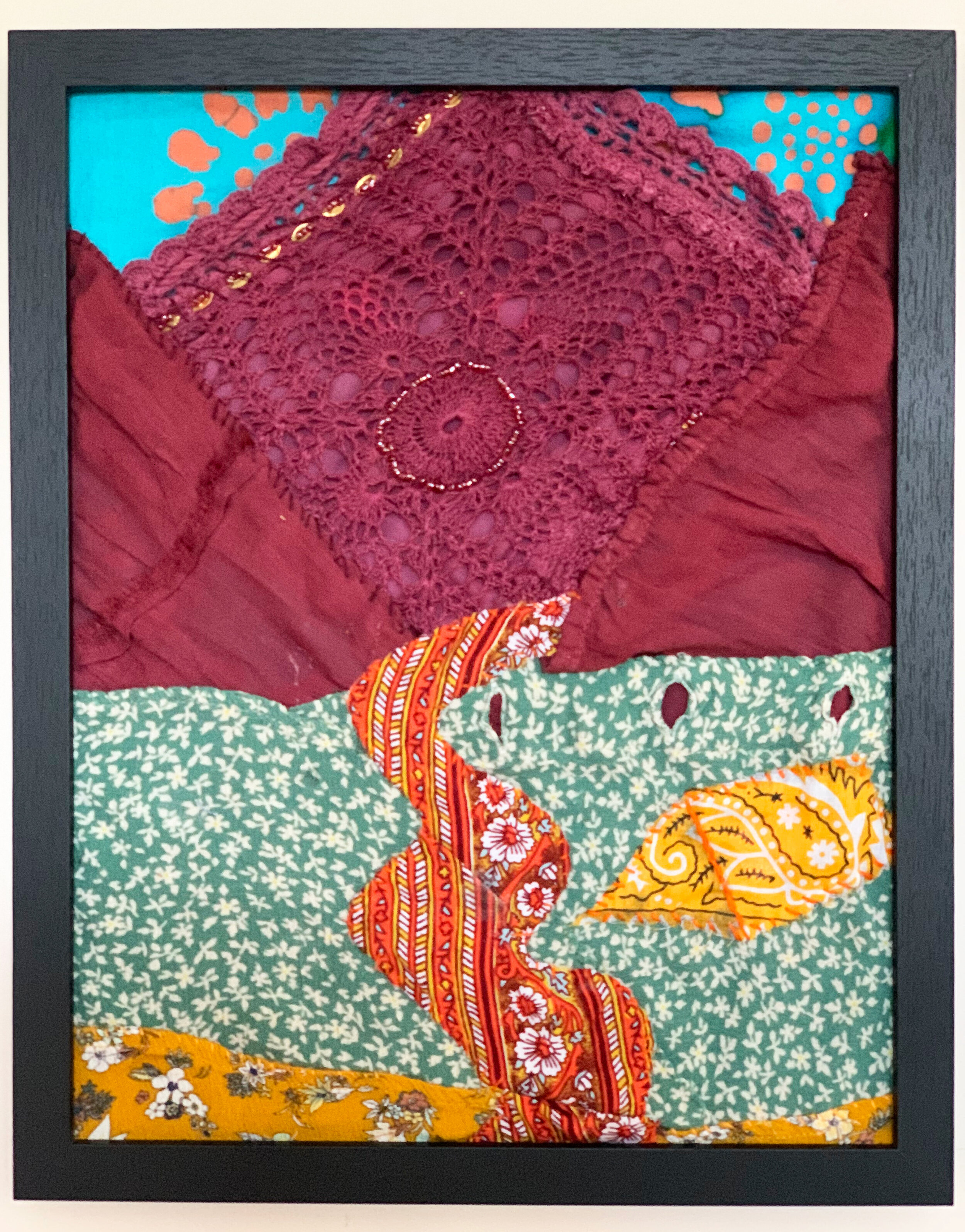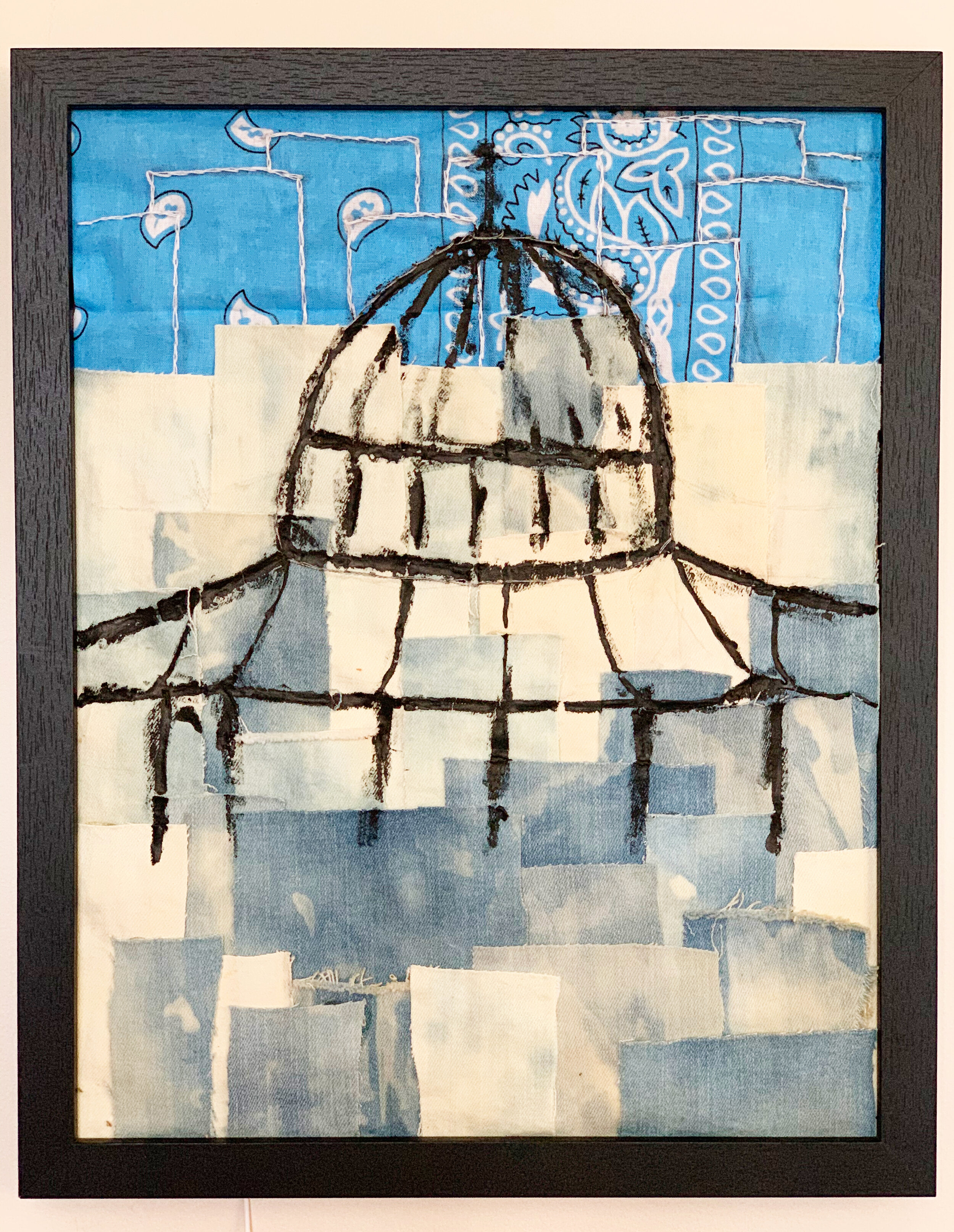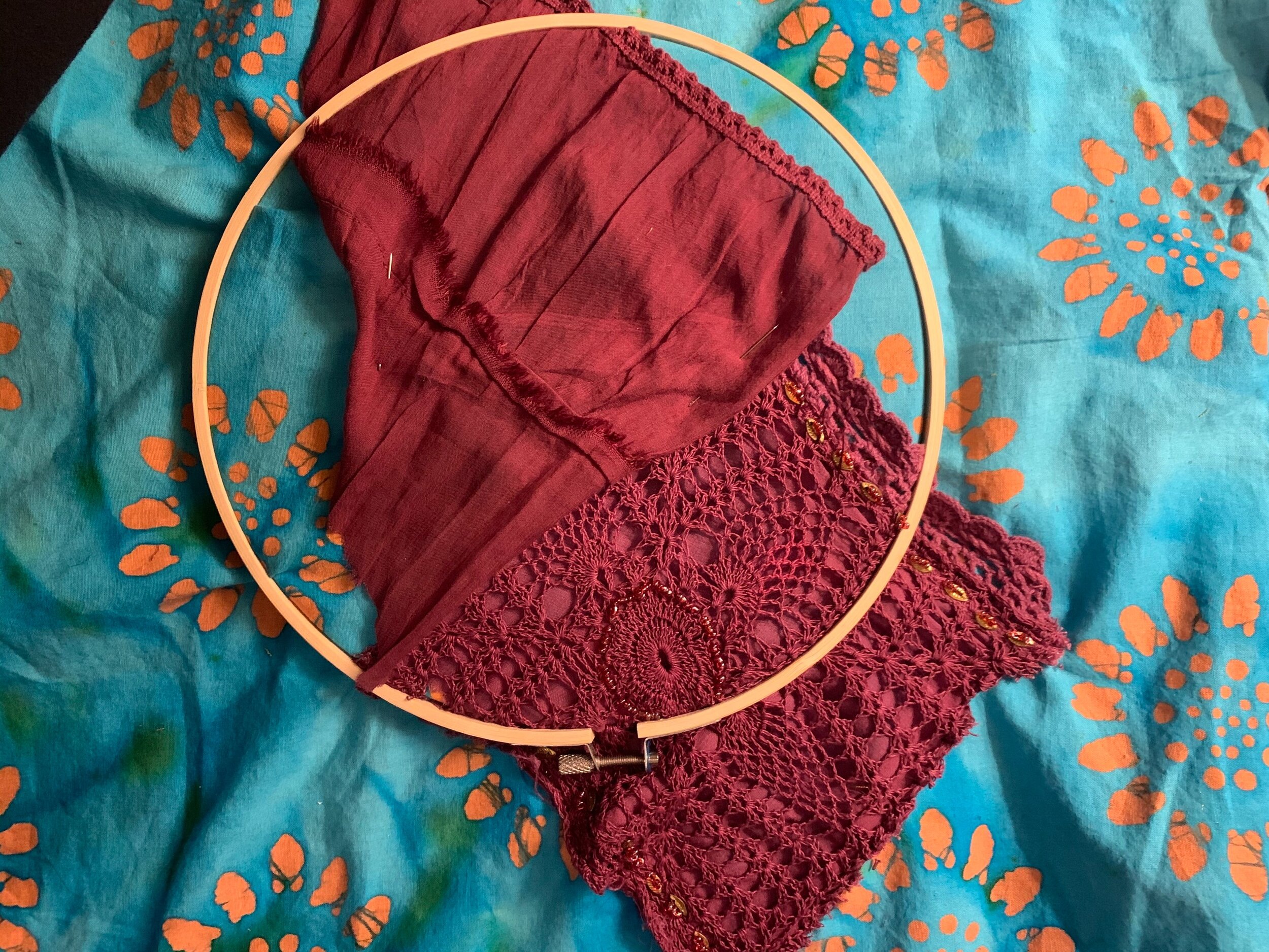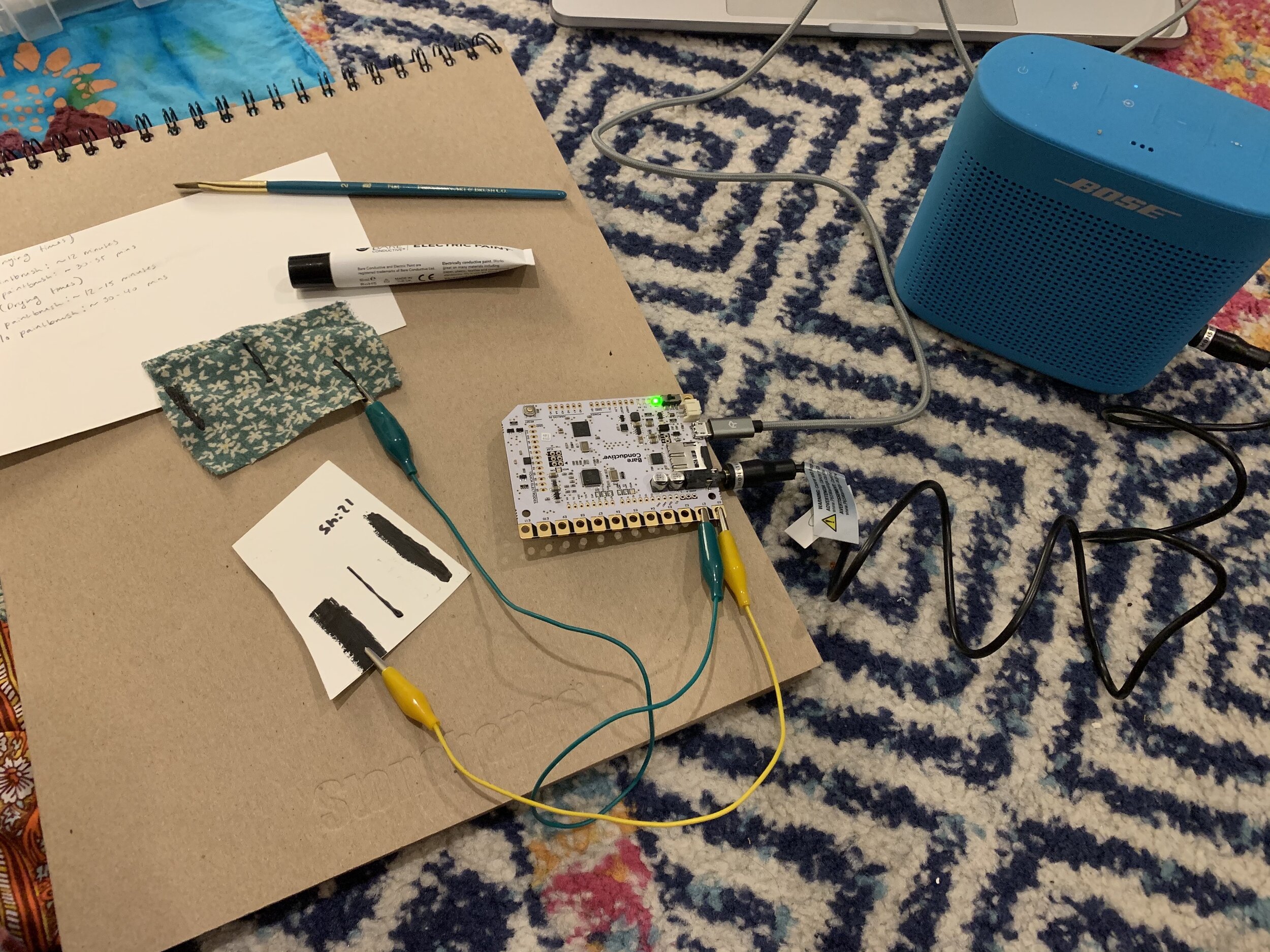stitches & STeps: Stories of Pilgrimage
A narrative-based, multi-sensory, interactive installation
Design Opportunity
How can we design immersive and interactive installations that convey personal and unique stories while still speaking to the viewer and conveying universal themes within the human experience?
Narratives of Pilgrimage
Strangely, or perhaps significantly, I have lived much of my life nearby iconic pilgrimage routes. Growing up in southern Colorado, we often visited El Santuario de Chimayo, the largest pilgrimage route in North America. Later, I lived in Logroño, La Rioja, Spain, which is an important waypoint on El Camino de Santiago. However, I myself have never completed a pilgrimage.
Yet this proximity sparked an interest in pilgrimages and the stories behind them. Each pilgrimage is unique, and each is deeply personal. For this project, I reached out to friends, family, and strangers, and, although I have heard many stories from many pilgrims, I was surprised by the depth and vulnerability displayed by the participants in this project. One woman, a stranger who answered my post on NextDoor, shared her story of traveling to Spain to spread her husband’s ashes after he tragically passed away merely two months before embarking on his lifelong dream of walking El Camino de Santiago. A born-and-raised Reformed Jewish girl shares her pilgrimage to Israel and, subsequently, Palestine, where she was forced to reconcile with the uncomfortable truths of her own culture and upbringing. Another girl speaks about her lifelong struggle with an eating disorder, and how walking the Colorado Trail helped her regain a healthy relationship with food and with herself. I was honored and humbled by these stories, and hope that, in sharing them, they will inspire and encourage others in their own life paths.
Materials
Combined techniques of crochet and embroidery create a three-dimensional, textured image
Hand-dyed, recycled cotton yarn
Re-purposed textiles
Embroidery thread
Bleach-dyed, re-purposed denim
Conductive thread
Conductive paint
Bare Conductive Touch-board
Bose Bluetooth speaker
Copper tape
Wires & alligator clips
Programming done in Arduino
Sketches done in Adobe Creative Suites & Procreate
Process
Narrative was really the focal-point of this project. I had no idea what stories I would receive, nor how those stories would manifest into images and objects. However, I knew that I wanted to incorporate various forms of textile manipulation and “crafts,” such as crocheting, dying, embroidery, and appliqué, and juxtapose these more traditional art forms with accessible technology to create a unique, multi-sensory user experience.
When collecting the audio, I did not steer the participants in any particular direction, but simply asked that they speak about their pilgrimage experience for as long, or as little, as they liked. The results varied from carefully crafted narratives to more loosely-structured flows of consciousness. Within each recording, a diamond emerged — a core truth that spoke to much more than an individual experience. Grief. Longing. Confusion. Loss. Pain. Struggle. Recovery. Healing. Universal themes naturally emerged, and I structured the images and resulting objects according to those experiences that most resonated with me and, in turn, the user.
The project is titled “Stitches and Steps” because, as I painstakingly cut, dyed, stitched, and formed these pieces, I realized that, much like a pilgrimage, this project had become a labor of love and endurance. All of the textile manipulations used require a great deal of time and attention, which allowed me to reflect on the stories I was sharing and enter a sort of flow-state of creative energy. At certain points, I felt myself being carried along the paths I was illustrating, walking alongside the pilgrims who shared these stories.
The technology and coding aspect of this project was fairly straightforward. Once I finally gathered all of the correct cords (the Bare Conductive Board requires a microSD card reader as well as a male-to-male aux cord — both of which are not commonly used), it was just a matter of programming the breakout board through Arduino. The most difficult aspect was making sure each circuit was complete, with the capacitive sensors correctly triggering the audio when touched. Conductive paint, as it turns out, is extremely messy and can crack as it dries, breaking the circuit. Conductive thread has a high resistance, meaning that you need to double, or even triple, the thread in order to get a digital read when someone interacts with it.
Once the audio was edited and loaded onto the Bare Conductive Board, which was coded to read the mp3 files through Arduino, it was simply a matter of experimenting with different methods of textile manipulation and embedded sensors. Once triggered, the audio files play through a bluetooth speaker and the breakout board itself can be powered by a computer or even a battery.
A capacitive sensor, made with copper tape, is embedded beneath the fabric
User Testing
Testing for this project was limited by COVID-19 and time constraints, however I was able to gain feedback from friends, family, and classmates throughout the design process. The participants who provided the narratives were initially asked if they had any preferences for their stories, or particular images or ideas that they wanted conveyed. However, they were purposefully left out of the rest of the design process, as I wanted their stories to grow into more universal narratives that could speak to a wider audience.
In initial testing, there were questions about where to press on the images and how to trigger the sensors. The addition of brief artist statements for each piece was an easy solution to this problem. Another issue, particularly for the piece that utilized conductive paint to create a circuit, was how hard the sensor needed to be pressed. Eventually, I pulled out the yarn that was initially painted with the conductive paint and soaked it in a mixture of paint and water, creating a more thoroughly-embedded conductive material. Still, this piece is easily the most finicky in regards to user response.
Another design constraint, which has become almost second-nature, is the requirement of keeping users safe when physically interacting with an installation in the context of COVID-19. For each presentation of this project, users were required to use hand sanitizer and wear face masks before touching the pieces. As the sensors were coded to be responsive to even the smallest input (without being so sensitive as to be triggered by ambient noise or movement), users were only required to lightly touch the sensors to trigger the audio.
User response, thus far, has been positive. People seem genuinely interested in both the physical pieces and the narratives themselves, and tend to listen to each story in its entirety before moving on to the next piece.












